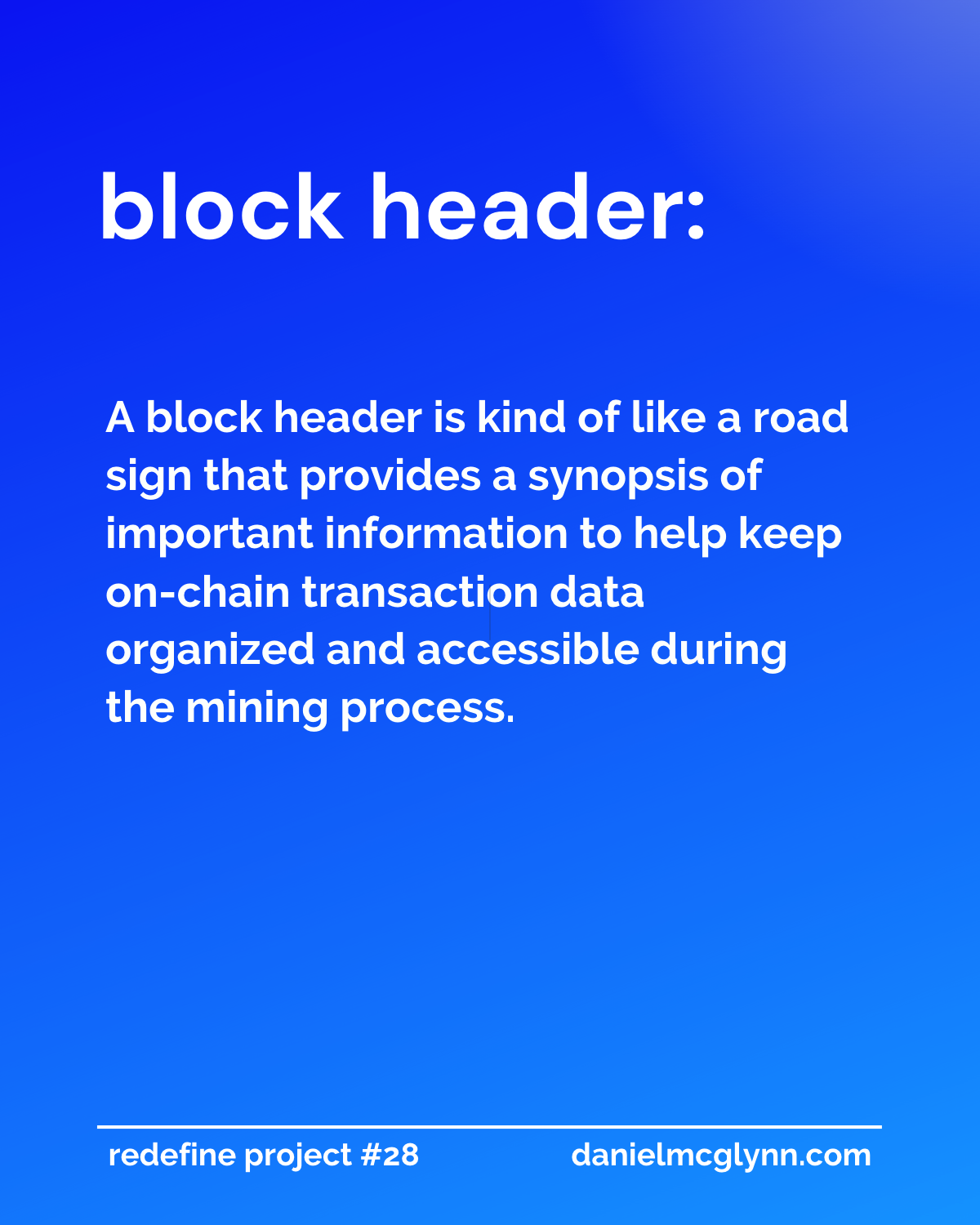For systems based on blockchain architecture, a block header serves an important role.
A block header is kind of like a road sign that provides a synopsis of important information to help keep on-chain transaction data organized and accessible during the mining process.

Important elements of a block header for Bitcoin for example are:
- the previous block’s hash
- the current block’s Merkle tree root
- a time stamp
- the difficulty target
- and the nonce
The use of a header style existed in data organization and deployment before Bitcoin, but the incorporation of a summary-style block header as a means to make Bitcoin mining more efficient was one of Satoshi Nakamoto’s innovations when first launching the Bitcoin Network.
The big advantage to the block header-style organization for Bitcoin and other proof-of-work systems is that it makes mining more efficient because miners can verify entire blocks of transactions and data without having to go through each individual entry in the block.
For most people, block headers are not part of everyday transactions. But they are an important piece of the overall blockchain system, and they do serve a crucial, albeit somewhat silent role, in mining.
What is block header in blockchain?
A block header is kind of like a TLDR the the new model of on-chain-based data architecture. The goal of a block header is to keep everything organized and the system running efficiently.